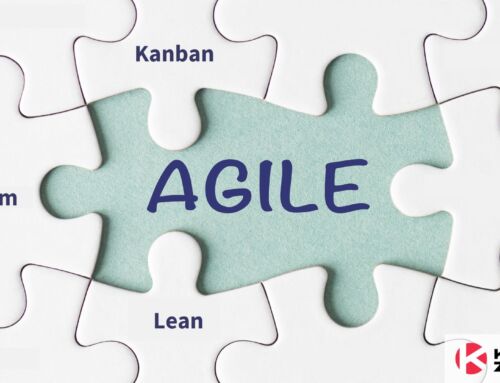
In every organization, leadership plays a vital role in its success. But the realization that it’s only leaders who bring out the best in their teams is what paves the way for an organization’s success. This leadership style has not always been the choice for most managers and company leaders. And up to this day, many are still baffled around this so-called servant leadership style.
The traditional top-down leadership style is what most companies have used for decades. It’s the kind of leadership style where managers do all the decision making and employees are left to execute. But as products and services have become more complex and sophisticated, companies have realized that managers and senior company leaders can’t always call the shots. They need the skills and expertise of their teams. They need their creativity and innovation.
This leadership approach has become more evident and applied by more companies that are seeking to become Agile. The command and control type of leadership works against everything that the Agile methodology stands for. Leaders need to be someone else – someone who can enable teams to self-organize and become high-performing.
So what should leaders do?
It is to become servant leaders. But what does being a servant leader mean? How does servant leadership help teams go through their Agile transformation?
What is Servant Leadership?
The term servant leadership was coined by Robert K. Greenleaf in his 1970 essay, “The Servant as Leader.” He explained what servant leaders are like.
“The servant-leader is servant first… It begins with the natural feeling that one wants to serve, to serve first. Then conscious choice brings one to aspire to lead. That person is sharply different from one who is leader first, perhaps because of the need to assuage an unusual power drive or to acquire material possessions…The leader-first and the servant-first are two extreme types. Between them there are shadings and blends that are part of the infinite variety of human nature.”
Servant leaders come from a position of service and not power. Servant leaders put the needs and interests of their teams first. Instead of getting and accumulating power, servant leaders share their power to empower their team members.
Does this mean that servant leadership is all about saying “yes” to all your team’s needs, wants, and interests?
Not exactly.
Characteristics of Servant Leaders
While being a servant leader means you’ve got to put your team’s interests above your own, you still have a responsibility to make business decisions and be accountable for your team’s actions. With that in mind, you still need to exercise your business acumen and expertise while engaging your team members to come up with better decisions, plans, and strategies.
Here are the top 7 characteristics of servant leaders and their importance.
Strong decision making and problem solving skills
Servant leaders involve their team members in the decision making and problem-solving process. They value their opinion and inputs. But in most cases, carrying out the decision lies on the part of the manager. So you still have to exercise your knowledge and business expertise to make the right decisions for the team and company. You can make better and more sound decisions when you engage your team in the process.
Empathy
The servant leadership style gives thoughtful attention to the needs of the team. It means actively listening to and acting upon the ideas, problems, and even complaints presented by team members. Servant leaders genuinely understand where others are coming from and can align with them.
Self-awareness
Servant leadership requires a high sense of self-awareness. Whatever you think, say, or do affects the people around you. And your action or inaction will affect how other people work with you.
Fosters a culture of trust
Servant leadership is high on trust and transparency. Great servant leaders know high performing teams need to be trusted and supported 100%. It will only happen if the managers show their genuine support, stands by their team’s decision, and leads by example. A great servant leader also knows that transparency builds trust. A servant leader ensures that information is shared and readily accessible to everyone.
Foresight and preparation
Servant leadership is also about forward-thinking. It’s about preparing and enabling the team to work towards the envisioned future of the company. Servant leaders use their knowledge and experience to make business decisions that support the long-term goals of the company. They can steward their teams’ actions to align with the objectives of the business.
Encourages and enables
Servant leaders are enablers. They think of ways on how to improve their team’s working conditions. They ensure that the best tools and resources are readily available to their teams. When times are rough, servant leaders rise to the occasion and lift their teams. Servant leadership isn’t about commanding your teams what to do. It’s about persuading and encouraging them to pursue what you both think will be beneficial for the company.
Multiplier
Servant leadership is about inspiring others to become leaders themselves. I truly believe that the success of a leader is by creating new servant leaders. And this succession enables the continuous growth and sustainability of the company. This characteristic is also one the basic principles of Kanban, an Agile approach. The concept of shared leadership or “encouraging leadership at all levels” speaks largely about how servant leaders should strive to be.
Why Servant Leaders are Agile Leaders
Now that we know what servant leadership means and what characteristics a servant leader has, how does this relate to the Agile methodology?
The Agile methodology has defied the conventions of traditional leadership. Agile companies are more collaborative, have a flat organization, and are home to servant leaders and motivated individuals.
One of the 12 principles behind the Agile Manifesto states,
“Build projects around motivated individuals.
Give them the environment and support they need,
and trust them to get the job done.”
And isn’t that a true testament of servant leadership?
Servant leadership means providing a productive and supportive working environment where employees thrive and get their job done. Leaders need to show their 100% support and trust to their employees so that they are motivated to do their best.
Enabling Agile Transformation through Servant Leadership
At the center of any Agile transformation are the leaders who propel the company’s metamorphosis. If you don’t have leaders who are ready to serve and put the needs of their people first, you won’t be successful in your Agile transformation journey.
Servant leadership plays an important role in any Agile transformation. The values that servant leadership brings are what shape an Agile culture for any company that goes through a transformation. Only when you have achieved a company culture that is inclusive, supportive, and has service at the heart of it all will you reap the benefits of a truly Agile organization.
Learn to Work Smarter, Not Harder!
Get our top articles weekly.
Table Of Contents
Discover many more posts…







